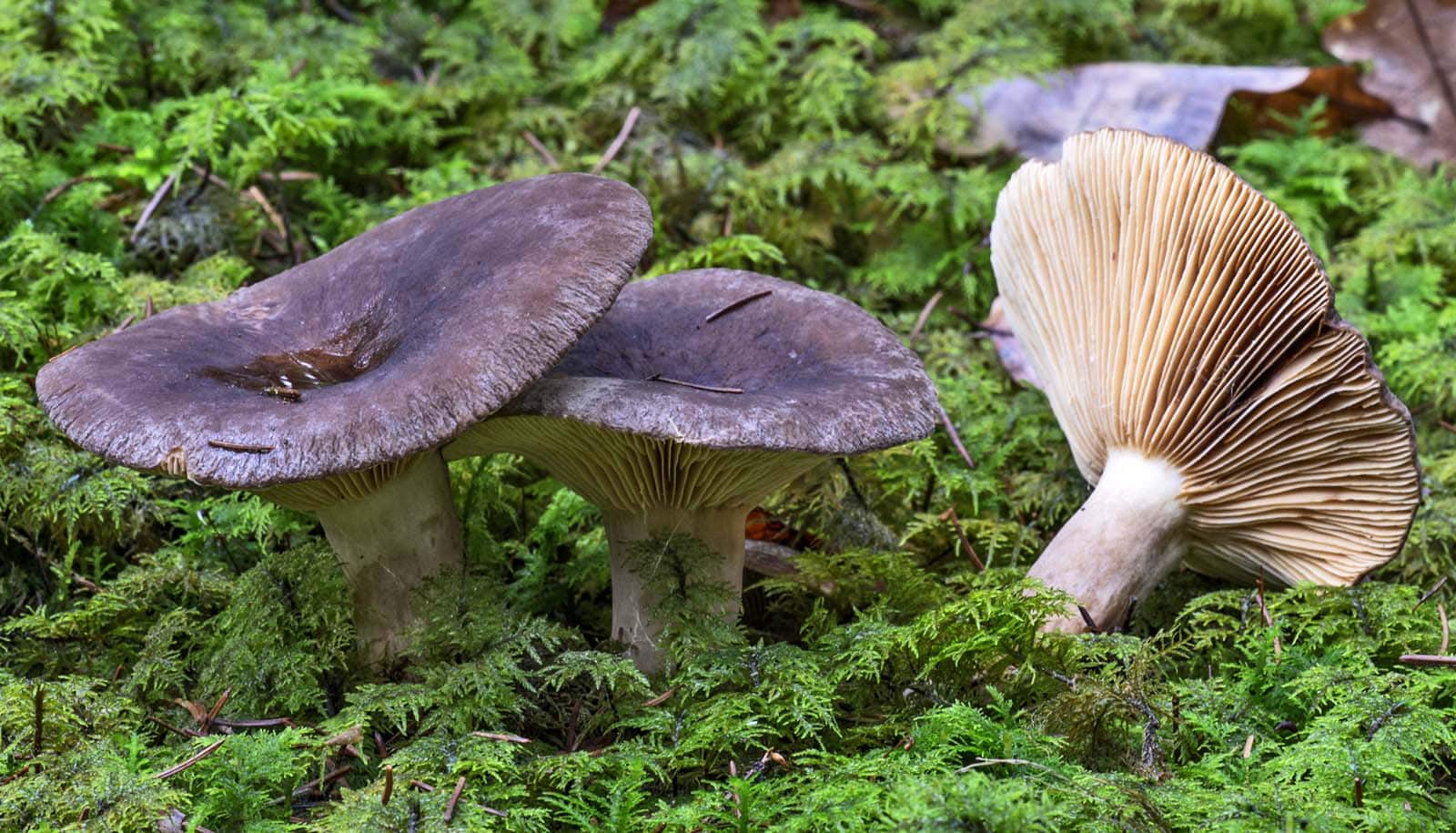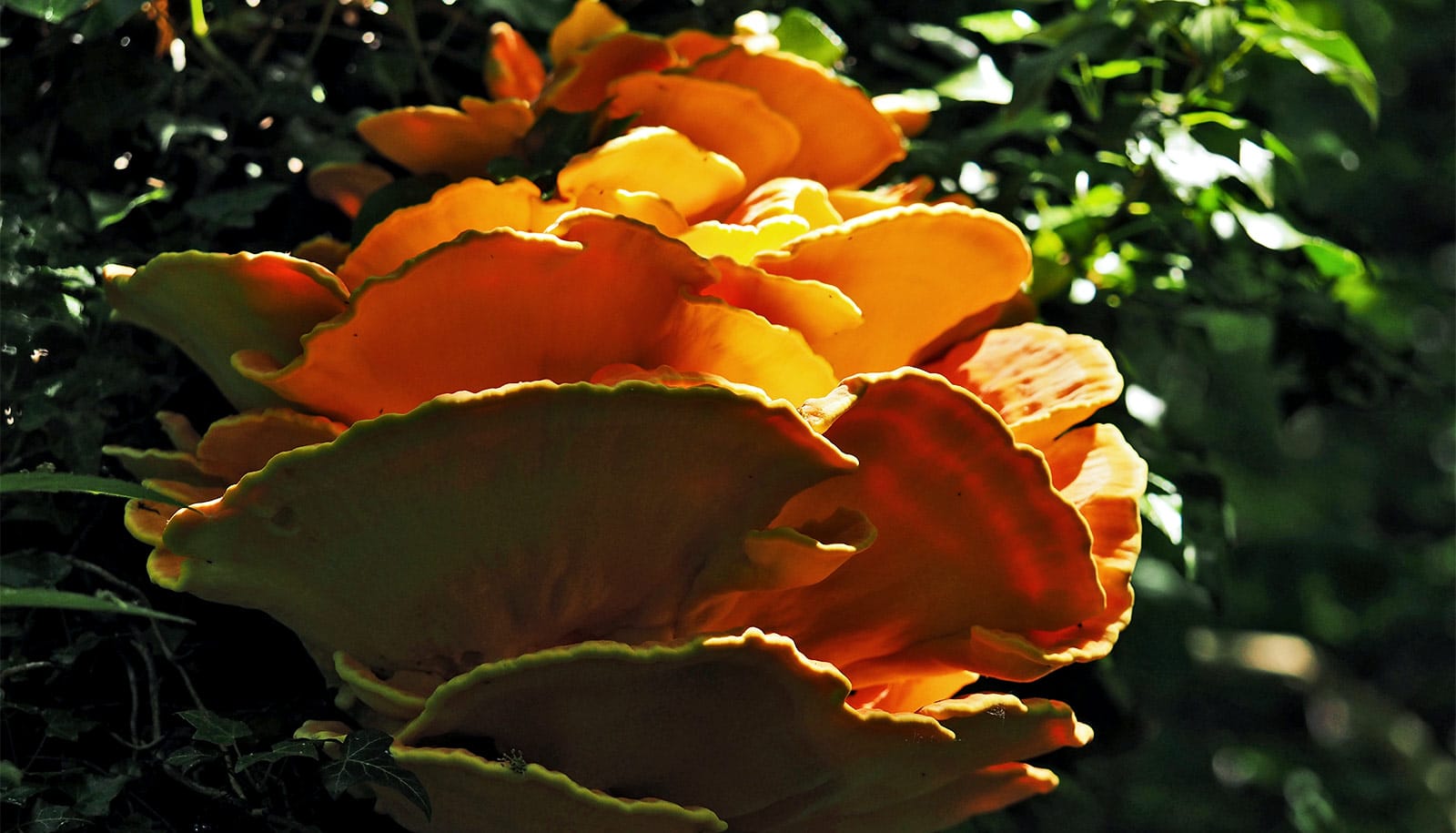Research finds that warming trends will likely result in major disturbances of networks of fungi, which could potentially harm forest resilience.
Trees depend on fungi for their well-being. Ectomycorrhizal fungi, for example, colonize the roots of many tree species where the boreal ecosystem (the zone encompassing Earth’s northernmost forests) and the temperate ecosystem (zone between the tropical and boreal regions) meet. This area features a mix of boreal trees including needle-leaved evergreens and temperate tree species including maple and oak.
When the ectomycorrhizal fungi attach themselves to tree roots, they acquire carbon in the form of sugars from their tree hosts and in turn provide the trees with important nutrients like nitrogen and phosphorous. It’s an important symbiotic relationship that drives ecosystem function and resilience.
But as climate change and global warming cause higher temperatures and amplified drought, little is known about how these important fungi will respond. Additionally, there are lingering questions about how climate warming will affect the underground threads—known as ectomycorrhizal networks—formed by fungi that connect trees and facilitate the transfer of water, nitrogen, and other minerals.
To investigate this issue, a research team from Syracuse University and the University of Minnesota conducted a climate change experiment where they exposed boreal and temperate tree species to warming and drought treatments to better understand how fungi and their tree hosts respond to environmental changes.
The study, led by Christopher W. Fernandez, assistant professor of biology at Syracuse, appears in the journal Proceedings of the National Academy of Sciences. The findings reveal that the combined effects of warming and water stress will likely result in major disturbances of ectomycorrhizal networks and may harm forest resilience and function.
The team conducted their work at a long-term climate change experiment called B4WARMED (Boreal Forest Warming at an Ecotone in Danger) in Minnesota. The experiment features plots where both boreal and temperate tree species have been planted and exposed to warming and drought treatments. This allows researchers to explore how the ectomycorrhizal fungi and the networks they form with their tree hosts respond to environmental stressors.
Fernandez, whose research aims to understand processes involving plant, microbial, and ecosystem ecology, says their study reveals that composition of ectomycorrhizal fungal species changes dramatically with climate change. Specifically, they saw a shift from species commonly found in mature forests that have high biomass mycelium (the thread-like body of the fungus that explores the soil and that is likely important for network formation) towards low biomass species that are generally found in highly disturbed ecosystems.
“There is a supported hypothesis that these low biomass species probably do not provide the host much benefit in terms of nutrition compared to high biomass species,” says Fernandez. “We found that the networks formed by these fungi that ‘connect’ the trees shifted from relatively complex and well-connected networks to ones that are simpler with less connections.”
The authors say these shifts were significantly related to the performance of the tree hosts and their ability to convert carbon dioxide into oxygen and sugars through photosynthesis. “Climate change is reducing the amount of carbon the trees fix and likely has cascading effects on how much carbon they can provide to their ectomycorrhizal fungi,” continues Fernandez. “This is likely causing a shift towards low biomass species, resulting in the breakdown of networks between trees.”
The researchers believe this to be the first study examining the response of ectomycorrhizal networks to climate change and their results should generate new research focusing on other ecosystems. Building on this work, they say the next step will be to link the changes in ectomycorrhizal networks to ecosystem level processes such as nutrient and carbon cycling to better understand how resilient they are to changing climate.
Source: Syracuse University



